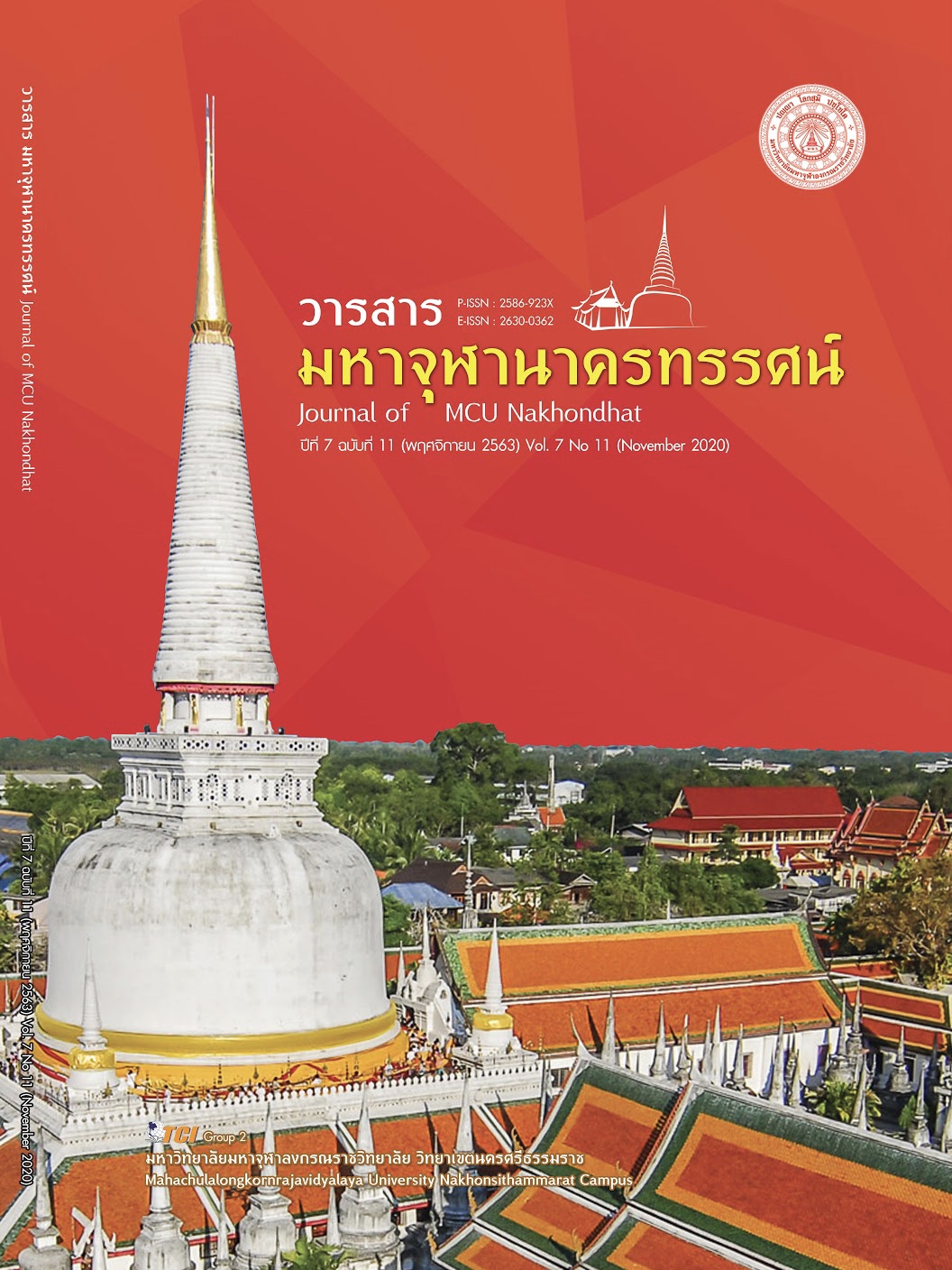INFORMATION TECHNOLOGY DEVELOPMENT OF RANGER INVESTIGATION SECURITY CO., LTD.
Main Article Content
Abstract
This research has the objectives: To study problems and factors affecting the development of information technology. As well as find ways and suggestions for the development of information technology to develop personnel and information technology systems to keep pace with the rapidly growing information technology. The sample used in this research was Ranger executives and employees. Investigation is limited by using mixed research methodology. The quantitative research of 3 groups, total 628 sets, accounted for 100%. Questionnaires were submitted using google form. The results were analyzed by the SPSS V.26 program and analyzed by percentage, mean, standard deviation. One - way variance Dual Mean Qualitative research section In - depth interviews consisted of 15 people in 3 groups using in - depth interviews. And use of content analysis techniques for context the research study found that State of problems and factors affecting the development of information technology. Is the development of working ability Must be consistent with the systematic information technology development and performance development Must be able to bring knowledge to improve work procedures standards and guidelines and recommendations, information technology should be linked to information from the planning process, organization Lead and command and controls leading to the most beneficial use of information for future security work easily accessible and the introduction of important safety technologies in the organization to help work and reduce safety risks and the most effective.
Article Details
References
น้ำทิพย์ วิภาวิน. (2558). เครือข่ายสังคมในสังคมเครือข่าย. วารสารวิจัยสมาคมห้องสมุด, (8)2, 36-37.
พระราชบัญญัติธุรกิจรักษาความปลอดภัย พ.ศ. 2558. (2558). ราชกิจจานุเบกษา เล่ม 132 ตอนที่ 104 ก (5 พฤศจิกายน 2558).
วศิน รำพึงกิจ. (2552). การสำรวจภัยคุกคามทางคอมพิวเตอร์และการรักษาความปลอดภัยข้อมูลสารสนเทศของธนาคารพาณิชย์ในประเทศไทย. กรุงเทพมหานคร: มหาวิทยาลัยธรรมศาสตร์.
ศิริรัตน์ ศรีไชย. (2557). รูปแบบวัฒนธรรมองค์กรและปัจจัยแวดล้อมในงานที่ส่งผลต่อความพอใจในการทำงานของพนักงานในองค์กร. กรุงเทพมหานคร: มหาวิทยาลัยเทคโนโลยีราชมงคลกรุงเทพ. สำนักวิทยบริการและเทคโนโลยีสารสนเทศ.
สิทธิพล จันทร์สว่าง. (2553). การตระหนักถึงความเสี่ยงในการรักษาความปลอดภัยของข้อมูลสารสนเทศในองค์กรของบุคลากรในอุตสาหกรรมโทรคมนาคม. ใน วิทยานิพนธ์บริหารธุรกิจมหาบัณฑิต สาขาบริหารธุรกิจ. มหาวิทยาลัยศรีปทุม.
สุนทรีย์ พัวพรพงศ์. (2555). แนวโน้มนโยบายการรักษาความปลอดภัยของระบบคอมพิวเตอร์เครือข่ายไร้สาย ในองค์กรอุตสาหกรรม อีก 5 ปี ข้างหน้า (2556-2560) โดยใช้เทคนิคเดลฟาย. กรุงเทพมหานคร: มหาวิทยาลัยเทคโนโลยีพระจอมเกล้าพระนครเหนือ สำนักหอสมุดกลาง.
สุรพัฒน์ มังคะลี. (2557). การพัฒนาโปรแกรมฝึกอบรมสมรรถนะหัวหน้าชุดปฏิบัติการในธุรกิจด้านการรักษาความปลอดภัย. ใน ดุษฎีนิพนธ์ปรัชญาดุษฎีบัณฑิต สาขาการพัฒนาทรัพยากรมนุษย์. มหาวิทยาลัยรามคำแหง.
Ausubel, D. P. (1968). Education Psychology : A Cognitive View. New York: Holt, Rinehart and Winston.
Darril Gibson. (2011). Understanding The Security Triad (Confidentiality, Integrity,and Availability). Retrieved August 18, 2019, from http://www.pearsonitcertification.com/articles/article.aspx?p=1708668
Deshpande, J. V. et al. (2010). Statistical Analysis of Nonnormal Data. India: Wiley Eastern Limited.
Rogers, E. & Shoemaker, F. (1971). Communication of innovation. New York: The Free Press.
Terence Yap. (2015). Human Action: A Treatise on Economics. Chicago: Regnery.


